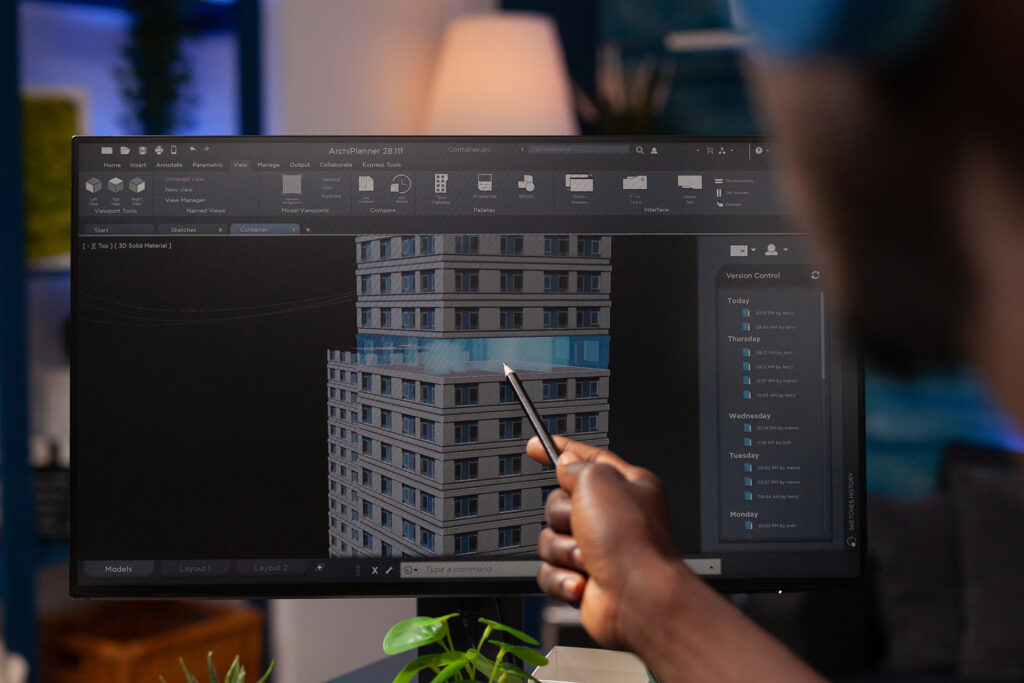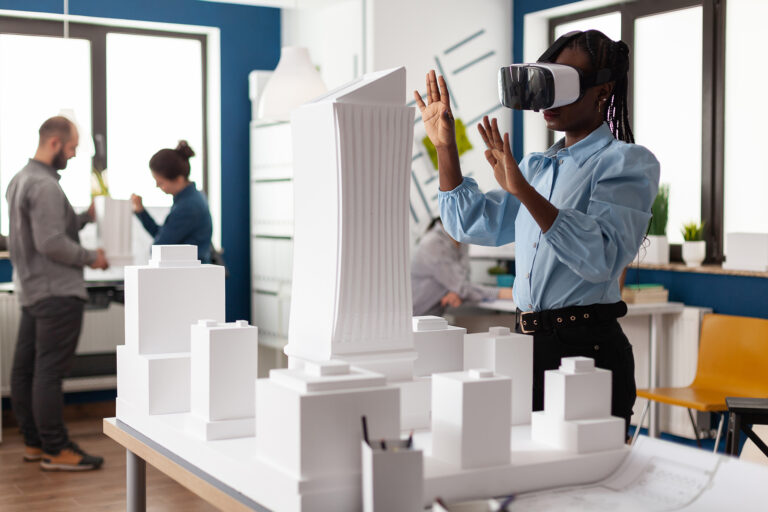
Innovative Design and Architecture Using Modern Technology
Design and architecture have always been at the forefront of innovation and creativity. With advancements in technology, architects and designers have been able to push the boundaries of design, creating spaces that are both aesthetically stunning and highly functional. Cutting-edge technologies such as Virtual Reality (VR), Artificial Intelligence (AI), 3D printing, and advanced design software have elevated modern architecture to new heights.
The Role of Technology in Innovative Design and Architecture
1. Virtual Reality and Augmented Reality (VR and AR):
These technologies enable architects to design and review projects in immersive 3D environments. With VR, clients can experience the final project before construction begins, providing more precise feedback. AR allows for the display of 3D models in real-world spaces, making it easier to visualize designs.
2. Artificial Intelligence (AI):
AI optimizes the design process by analyzing spatial and environmental data and suggesting the best materials and layouts. Machine learning algorithms can also offer innovative design patterns that were previously unimaginable.
3. 3D Printing:
This technology has revolutionized construction, allowing for the rapid and precise production of building components and even entire structures. It also minimizes material waste and reduces construction costs, contributing to sustainable architecture.
4. Parametric Design:
Using advanced software like Rhino and Grasshopper, architects can create complex, dynamic forms that would be difficult or impossible to design manually. Parametric design uses algorithms to generate innovative forms that are both aesthetically appealing and functionally optimized.
5. Environmental and Energy Simulations:
Advanced simulation tools allow architects to assess the environmental impact of a design before construction begins. From analyzing natural light and ventilation to evaluating energy consumption and carbon footprint, these tools contribute to sustainable and efficient building designs.
6. Robotics in Construction:
Robots and automation are transforming traditional construction methods. From robots capable of constructing complex structures to drones used for project monitoring, robotics technology enhances precision and reduces project timelines and costs.
Benefits of Using Technology in Architecture
1. Enhanced Precision and Quality:
Advanced tools and software enable high levels of precision in design, reducing human errors.
2. Time and Cost Efficiency:
Technologies like 3D printing and advanced simulations shorten design and construction timelines while optimizing costs.
3. Sustainable and Eco-Friendly Design:
Using energy analysis tools and eco-friendly materials reduces the negative environmental impact of buildings.
4. Improved Client Experience:
Interactive technologies like VR and AR actively involve clients in the design process, ensuring the final result meets their expectations.
Examples of Innovative Architecture Using Modern Technology
– The Edge (Amsterdam): One of the most sustainable buildings in the world, utilizing smart technologies and data analysis for energy management.
– The Morpheus Hotel (Dubai): A parametric design masterpiece featuring complex forms created using advanced software.
– 3D-Printed Homes: Projects like ICON in Texas, which produce affordable housing using 3D printing technology.
Conclusion
Technology serves as a powerful tool, offering endless possibilities for innovative design and architecture. Today’s architects can leverage these technologies to create spaces that are not only beautiful and functional but also improve the quality of life and contribute to environmental preservation. With ongoing advancements, the future of design and architecture promises to be even more innovative and creative.


No comments yet.